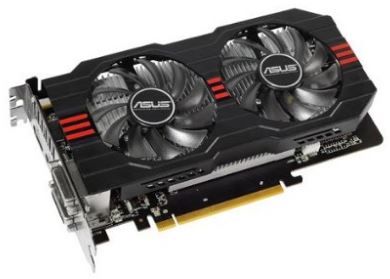A graphics card is an essential component for an optimal gaming experience. It plays a crucial role in rendering graphics, textures, and effects in games. When choosing a graphics card for gaming, there are several factors to consider to ensure you select the one that meets your needs.
In this article, we will delve into the various factors that should be taken into account when choosing a graphics card for gaming.
1. GPU Chipset and Performance:
The Graphics Processing Unit (GPU) chipset is the heart of a graphics card and determines its gaming performance. It’s important to consider the GPU’s architecture, clock speed, and the number of cores it possesses.
High-end GPUs often provide better gaming performance due to their advanced technology and increased power. It’s advisable to check benchmark tests and reviews to evaluate the performance of a graphics card before making a decision.
2. Memory Size and Bandwidth:
Graphics cards have dedicated memory, known as Video RAM (VRAM), which stores and accesses game data. The size of the VRAM affects the smoothness of gameplay, the ability to handle higher resolutions, and the level of detail in textures.
Additionally, considering the memory bandwidth is crucial, as it determines how quickly data is transferred into and out of the GPU’s memory. Currently, GDDR6 is the most advanced and commonly used memory technology in gaming.
3. Power and Cooling:
Gaming graphics cards require a substantial amount of power, so it’s important to check the compatibility with your power supply. Selecting a graphics card that matches your power supply’s wattage and connectors is crucial.
Higher-end graphics cards often require additional power connections, such as 8-pin or 6-pin connectors. Furthermore, effective cooling mechanisms, such as heat sinks and fans, help maintain optimal performance and extend the lifespan of the graphics card.
4. Display and Resolution:
When choosing a graphics card, it’s important to consider the display outputs it supports, such as HDMI, DisplayPort, and DVI. Compatibility between the graphics card and display devices, especially if using multiple monitors, should be verified.
Additionally, it’s crucial to select a GPU that supports the desired resolution and refresh rate for optimal gaming experience. Popular gaming resolutions include 108p, 144p, and 4K, and each requires specific graphics card capabilities.
5. Software and Driver Support:
Software and driver support are vital for optimal gaming performance. Graphics card manufacturers regularly release driver updates to improve compatibility and performance in games.
Considering the gaming optimization features provided by the driver software, such as game-specific settings and optimizations, can also enhance the gaming experience. Popular graphics card software, like NVIDIA GeForce Experience and AMD Radeon Software, offer additional features and utilities to enhance gaming performance and customization.
6. Budget and Future-proofing:
Setting a budget is important when choosing a graphics card since high-end cards come with a more significant price tag. However, they also provide better performance and a longer lifespan. Mid-range and budget graphics cards can offer good value for casual gamers.
Future-proofing is another consideration, as selecting a graphics card capable of handling upcoming games and technologies can save money in the long run and extend the card’s lifespan.
7. Gaming Requirements and Preferences:
Every gamer has different gaming requirements and preferences, so it’s important to consider your specific needs when choosing a graphics card. Find out the system requirements for the games you play.
Some games may require higher-end graphics cards to run smoothly at their recommended settings, while others may be more forgiving. Consider the genre of games you play, such as first-person shooters, role-playing games, or strategy games, as some genres tend to be more demanding in terms of graphics performance.
Additionally, consider any specific features or technologies you may want, such as real-time ray tracing, which can significantly enhance visual fidelity in certain games.
8. Upgradability and Compatibility:
When investing in a graphics card, it’s also important to consider future upgradability and compatibility. Graphics card technology advances rapidly, so you may want to choose a card that allows for future upgrades.
Consider factors such as expansion slots, thermal design power (TDP), and physical dimensions to ensure the new graphics card will fit into your existing system. It’s also important to check the compatibility with other components, such as the motherboard and CPU. Some motherboards may have specific PCIe slot requirements or limitations, so ensure the graphics card you choose is compatible with your current system or any potential upgrades you plan to make shortly.
Conclusion:
Choosing the right graphics card for gaming requires careful consideration of factors like GPU performance, memory size, power and cooling, display compatibility, software support, and budget. It’s important to strike a balance between performance, cost, and future needs. Thorough research and comparison of different graphics card options are crucial to making an informed purchase decision. By selecting the most suitable graphics card, you can enhance your gaming experience and enjoy smooth and visually impressive gameplay.







